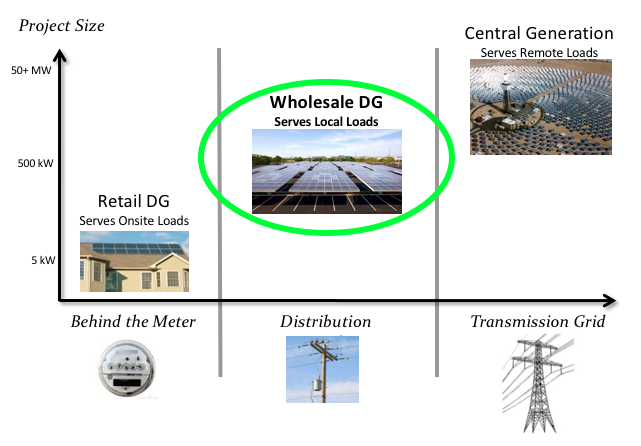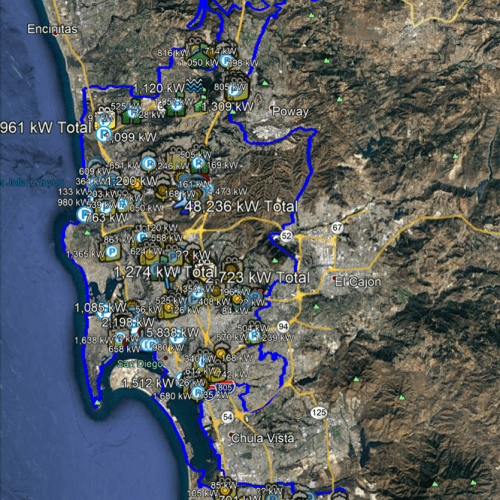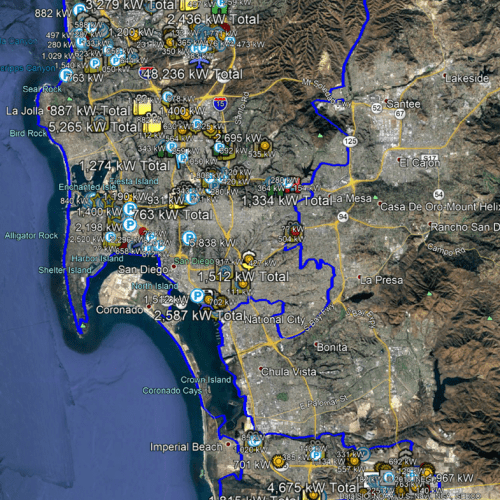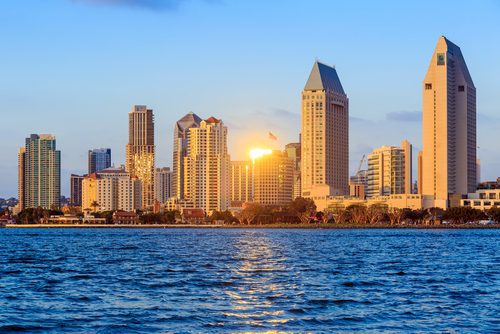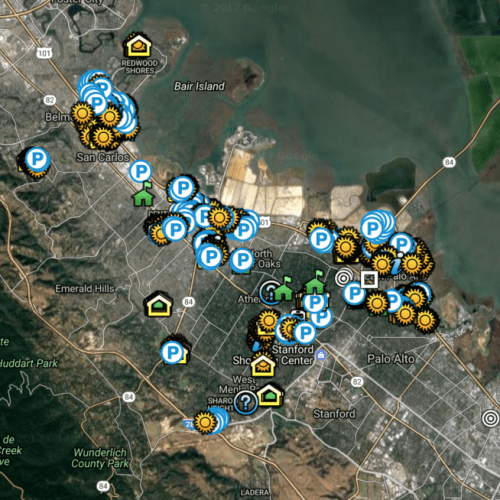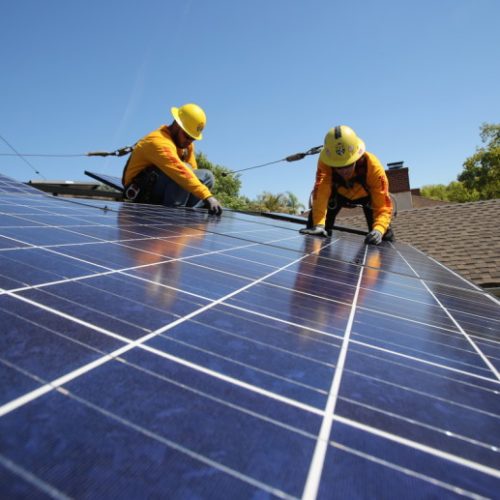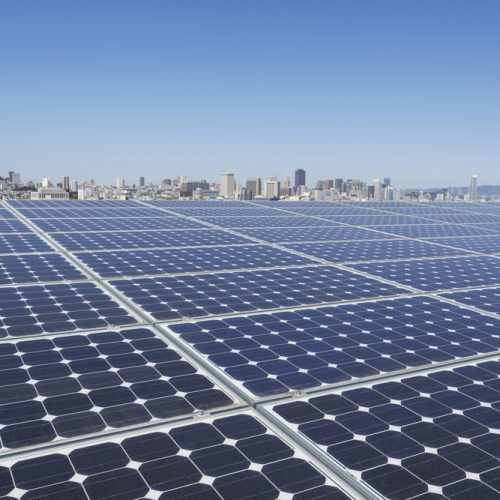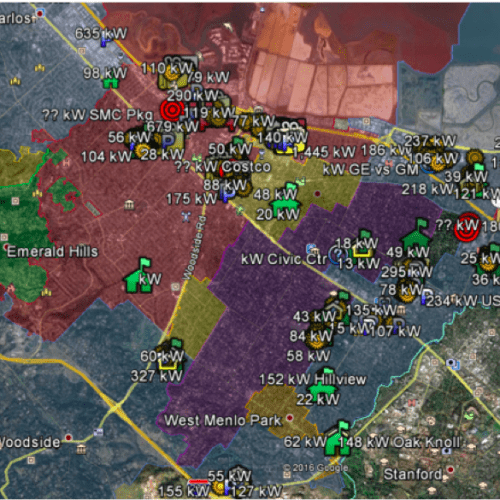The Clean Coalition worked with the City to analyze the distributed solar potential in San Diego — to assess the potential costs and benefits of local renewables to the City and its residents. Local renewables are defined as being interconnected on the distribution grid within the City boundaries.
Specifically, this work determined the solar deployment potential on municipal property and city-wide, gleaning lessons learned from past experiences with municipal solar, and developing solar and storage request-for-proposal templates that support municipal procurement of technology to improve city energy resiliency.
In parallel, the City of San Diego intends to:
- Evaluate policy and programs that will accelerate achievement of the maximum local renewables goals deployment, along with renewables-driven resilience across substation-level grid areas, enabled by Community Microgrids.
- Begin with behind-the-meter (BTM) solutions that are achievable without policy and program innovations, and without utility facilitation or the establishment of an alternate load-serving entity (LSE).
- Over-weight benefits to communities of concern (COC).



